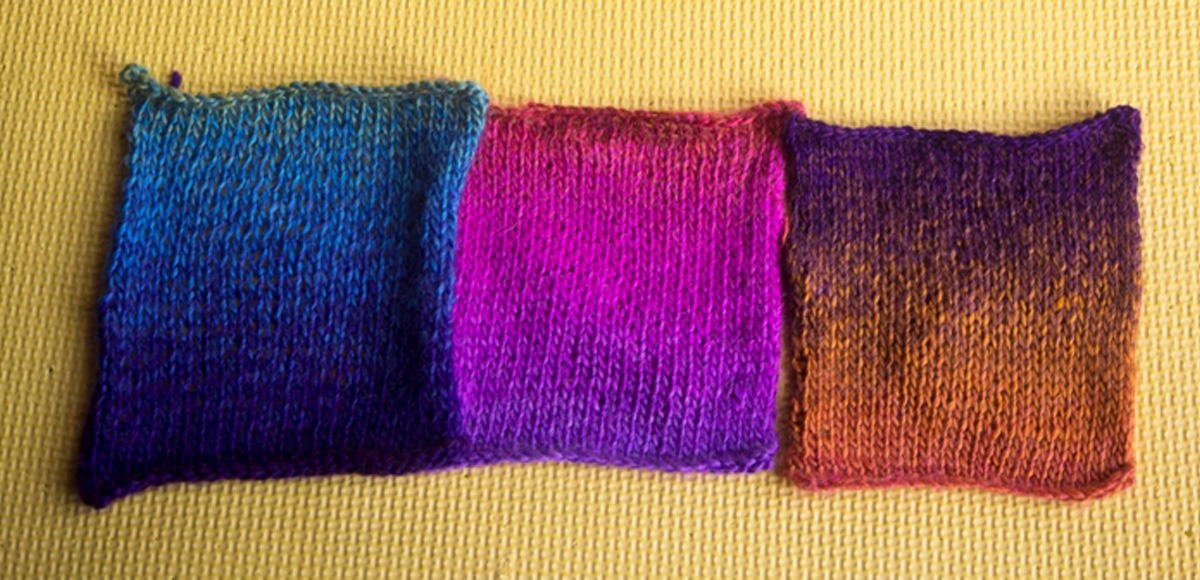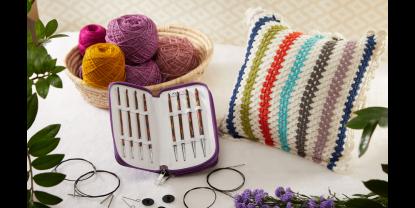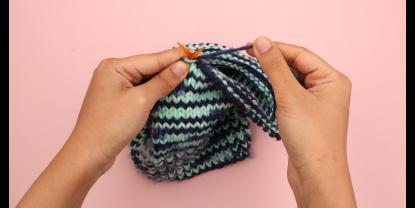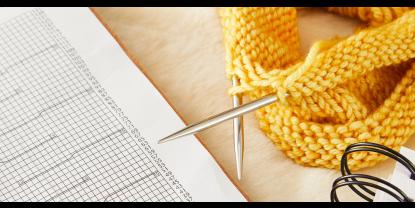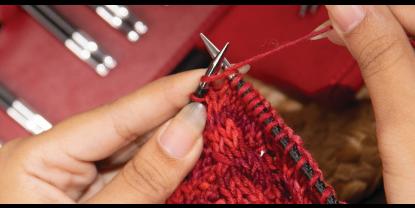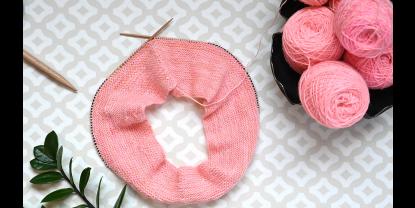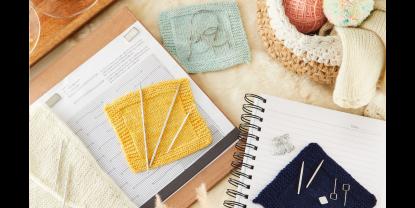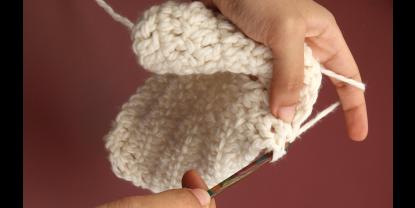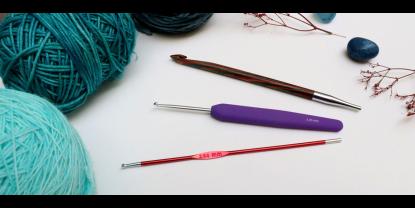Have you ever had the experience of knitting something to the correct size in the pattern to discover you have created a miniature sweater or a cardie that doubles as a tent?
It comes down to not having checked your tension — or made a tension square.
Knitting to the correct tension is essential if your piece is going to come out the same size as the pattern. All the numbers in the pattern for rows, stitches, decreases etc have been worked out using a specific tension — if your tension doesn’t match then neither will the measurements. And if you substitute a yarn, it is even more essential because you can’t assume it will behave exactly the same as the yarn in the pattern.
DK squares (26sts x 34 rows) knitted on 4.5mm, 4mm and 3.5mm needles
Getting the right tension
The three squares pictures were knitted with the same self striping yarn and lightly steamed before measuring. Measure your square in several places using a tape measure or a gauge such as our lovely Elephant Needle and Hook Sizer, as shown here, and average the number of stitches you count in 10cm in each measurement. Repeat this to work out the number of rows.
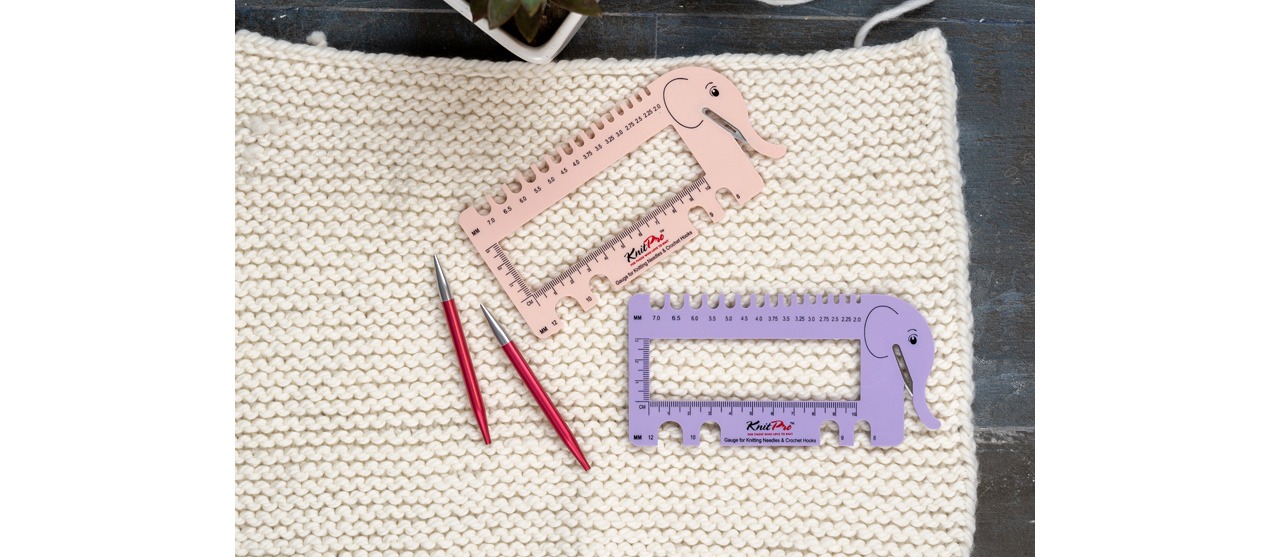
The 4.5mm needles gave a tension of 19 sts x 25 rows, 4mm was 21 sts x 28 row and 3.5mm, 23 sts x 30 rows for a 10cm square.
This means that 105 sts would give you 50cm using the 4mm needles but 45.5cm on 3.5mm and 55cm on 4.5mm — (stitch number divided by stitch tension) x 10 = width.
So if the tension for the pattern was 21 sts for 10cm on 4mm needles but your tension came out as 20sts because you are a slightly looser knitter you could end up with a garment several centimetres too big. The same is true for differences in row tension
If your tension is looser, knit a new tension square using a needle one or two sizes smaller.
If you have too many stitches and rows to 10cm try going up a knitting needles size.
Sometimes you need to try a couple of needle sizes to get find the right tension but the hassle of knitting some extra tension squares is nothing compared to ending up with a useless garment.
In most cases if you can only get one of row and stitch tension correct, it is better to choose the knitting needles that give you the right stitch tension and the closest row tension. This is because patterns often ask you to work to a certain length which will allow you to compensate for having a slightly different number of rows to 10cm.




